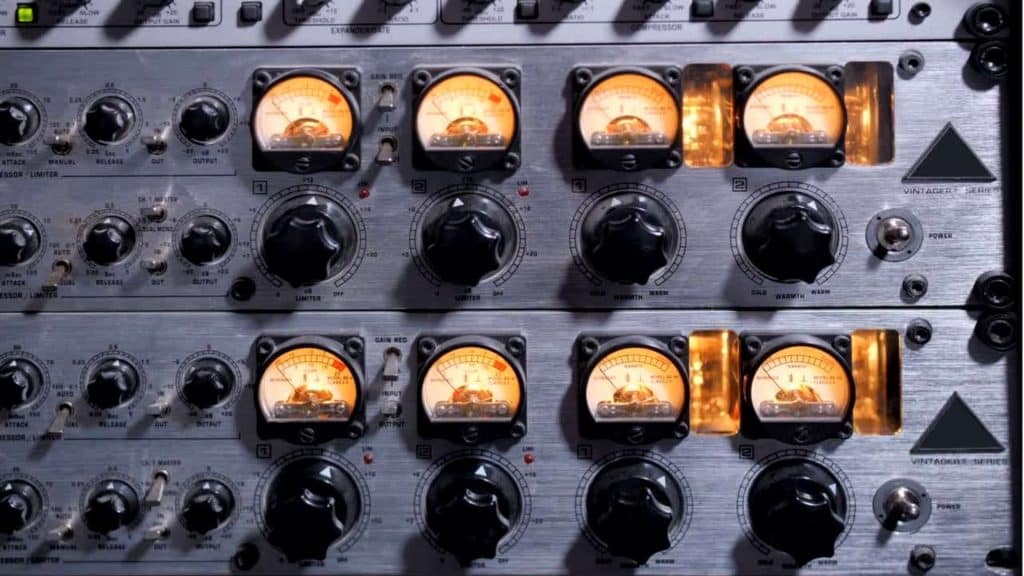To understand the concepts of diegetic and non-diegetic music, it is necessary to first understand the definition of diegetic sound.
This term comes from “Diegesis,” which in Greek literally means “narration,” from which we can extrapolate that diegetic sound is essential for narration or film.
It is important to note that the film itself encompasses its own universe, in which the things we see and hear happen. Everything included in that world is considered diegetic as it is part of the story’s narration.
Once we understand the concept of the “Universe” of the film and the concept of “Diegesis,” we can move forward and define the concept of diegetic sound.
Diegetic and Non-Diegetic Sound
Diegetic sound is that which originates within the universe of the film, that is, it takes place within that world.
A very simple way to identify if a sound is diegetic or non-diegetic is to ask if the characters in the film can hear that sound. If the answer is yes, then it is a diegetic sound; if it is no, it is a non-diegetic sound.

What is Diegetic Music?
As we explained earlier, a diegetic sound is one that takes place within the work’s own universe. Well, the same goes for music.
If the music originates within the narration itself, we will say it is diegetic music; the same question we asked earlier applies to this specific case. If the characters of the film can hear the music playing, it means it is diegetic music.
There are many moments when the movie’s music is tuned within the movie’s own universe, whether it’s the music of a concert, a disco, a man playing some instrument on the street or in the subway… Here are some examples of films in which diegetic music is used to complement the film’s narration, so you can understand it more accurately.
Examples of Diegetic Music in Cinema
If we have to talk about diegetic music, the clearest examples are those films and sequences that deal with music as the main theme. Some of the clearest examples could be:
The Pianist
In this scene from The Pianist, a Roman Polanski film starring Adrien Brody, we can observe how Adrien’s character plays the piano. This is a clear example of diegetic music as the character himself is the one who makes the music sound.
School of rock
Another clear example of diegetic music is this scene from “School of Rock,” where the well-known actor Jack Black begins to form a rock band with students from a high-class school.
Eurotrip
In this scene from “Eurotrip,” a well-known teen comedy, actor Matt Damon gives a concert in which he dedicates a song to one of the protagonists by mocking him. This is another clear example of diegetic music.
Skins
An example in which the characters are not the ones who make the music sound, but we have diegetic music. In this scene from “Skins,” the characters are in a club and DJ music is playing in the background. This music is diegetic since it is within the film’s universe and the characters can hear it.
What is Non-Diegetic Music?
If you have understood what diegetic music is, it is very easy to understand what non-diegetic music is. Non-diegetic music is that which does not form part of the film’s universe and which the characters cannot hear since it does not originate in the world of the film.
You might better understand it as soundtrack music, although this is not a very accurate term.
To help you understand better, here are some examples.
Examples
Any film that contains music that the characters cannot hear contains non-diegetic music; some examples may be:
The Exorcist
One of the non-diegetic music pieces that stay etched in the subconscious. In this scene, Mike Oldfield‘s composition accompanies the images, creating a very characteristic atmosphere. This music cannot be heard by the characters as it does not originate within the film’s universe, thus being non-diegetic music.
Interstellar
In this scene from the film “Interstellar,” the wonderful composition by Hans Zimmer accompanies the images to create sensations in the viewer. This is another clear example of non-diegetic music.
Gladiator
Another composition by Hans Zimmer, one of the most remembered, is this final scene from the movie “Gladiator”. This is also non-diegetic music in which the composer enhances the images of a wonderful scene.



